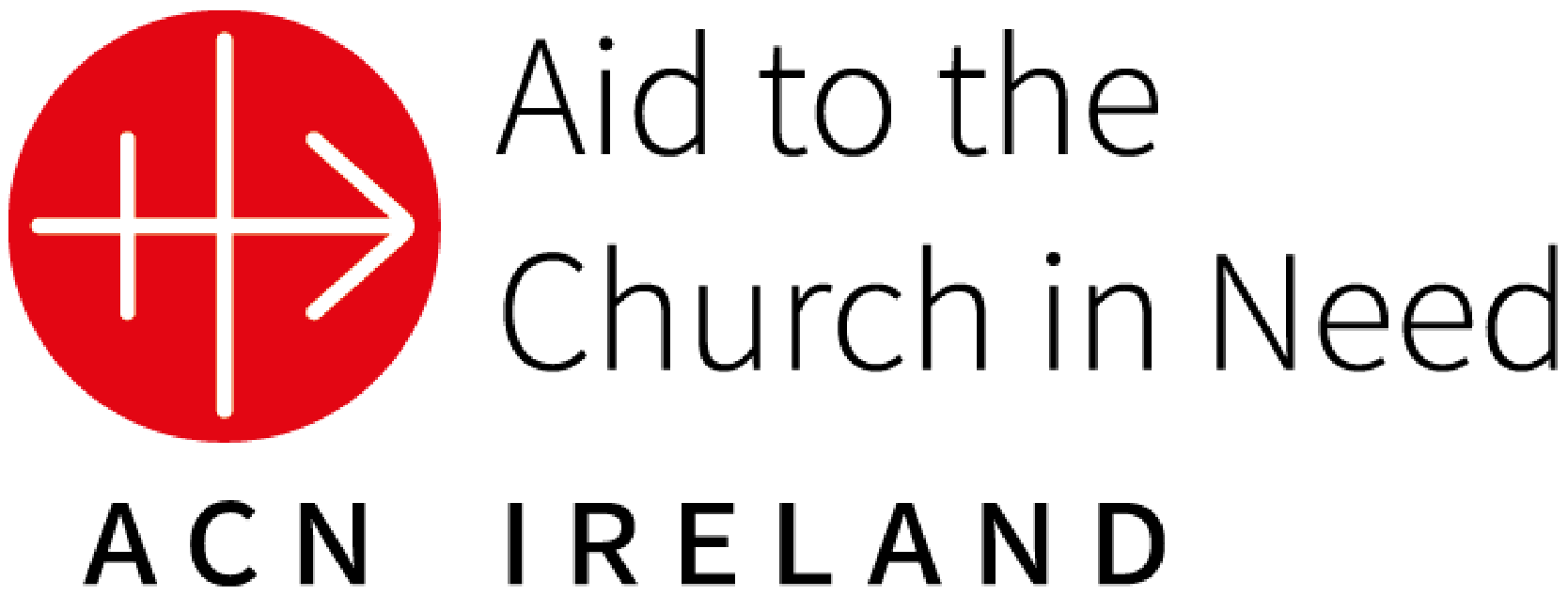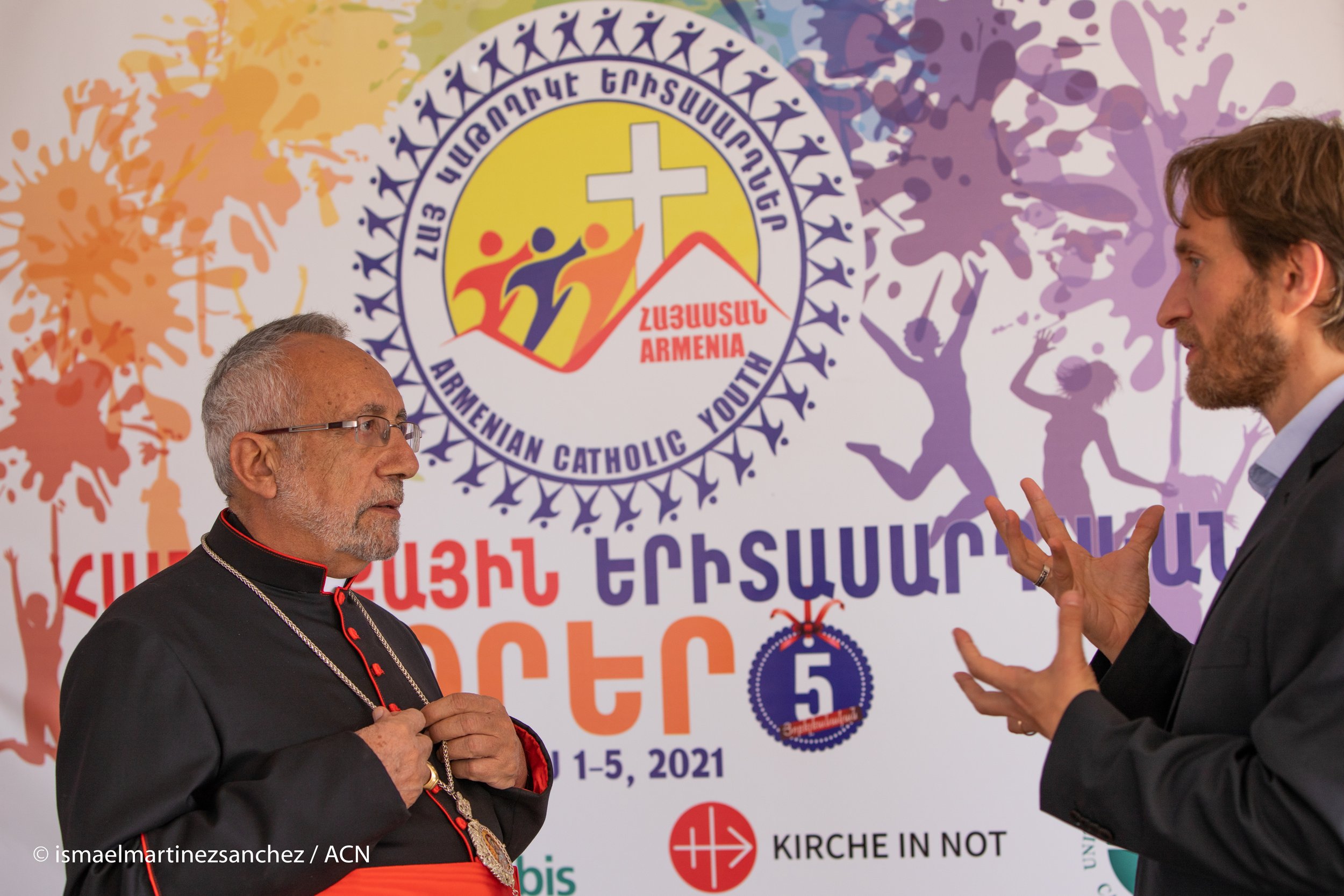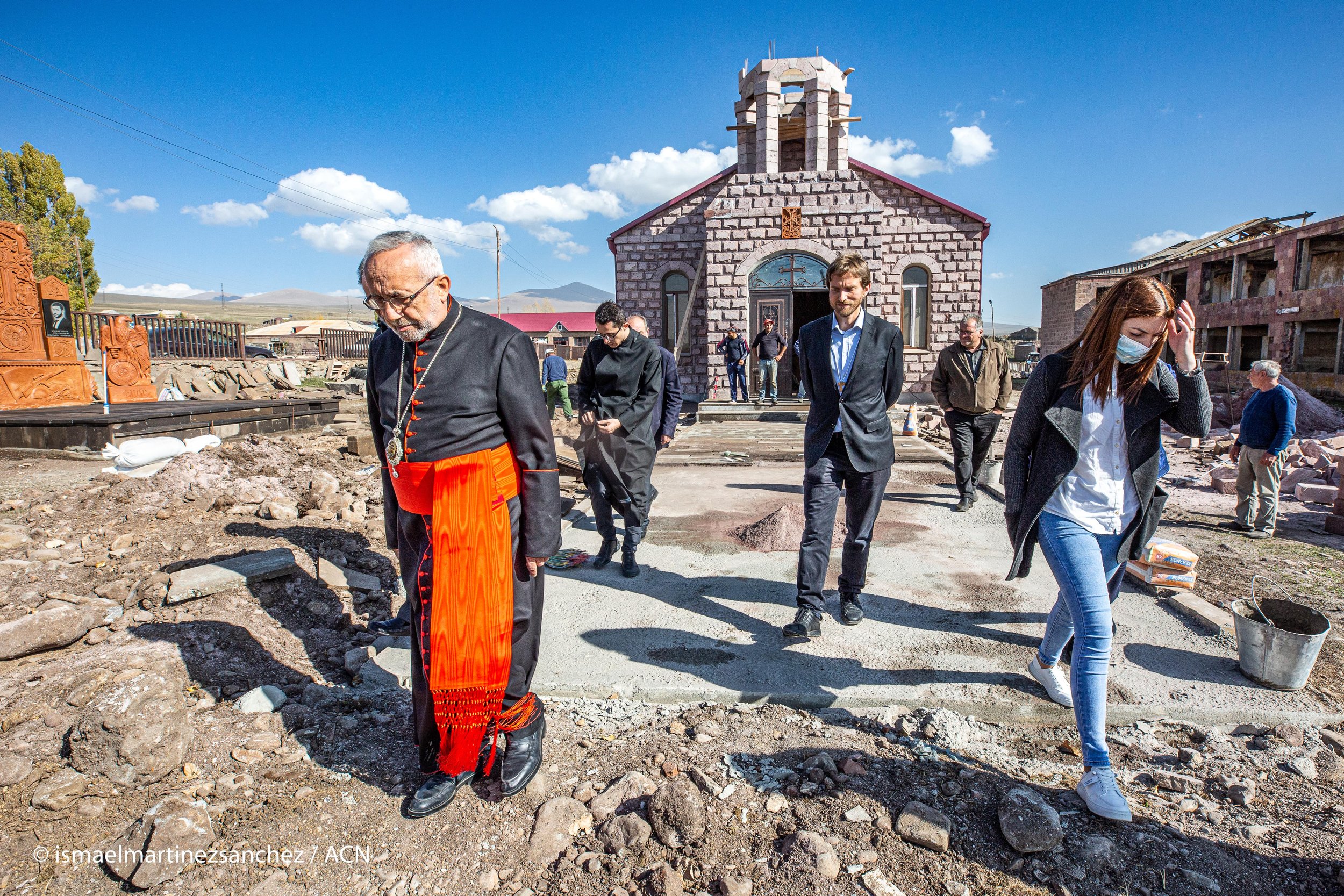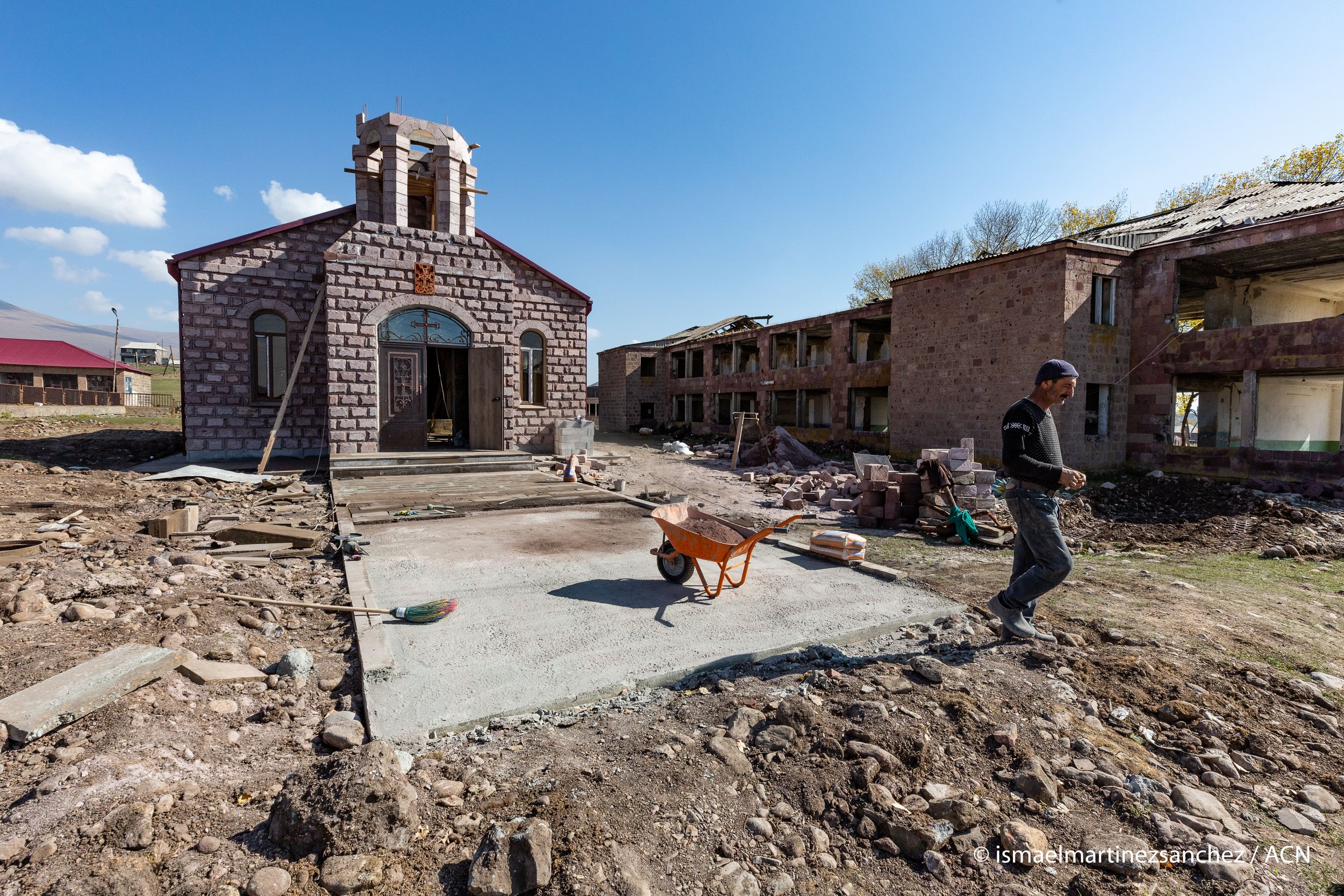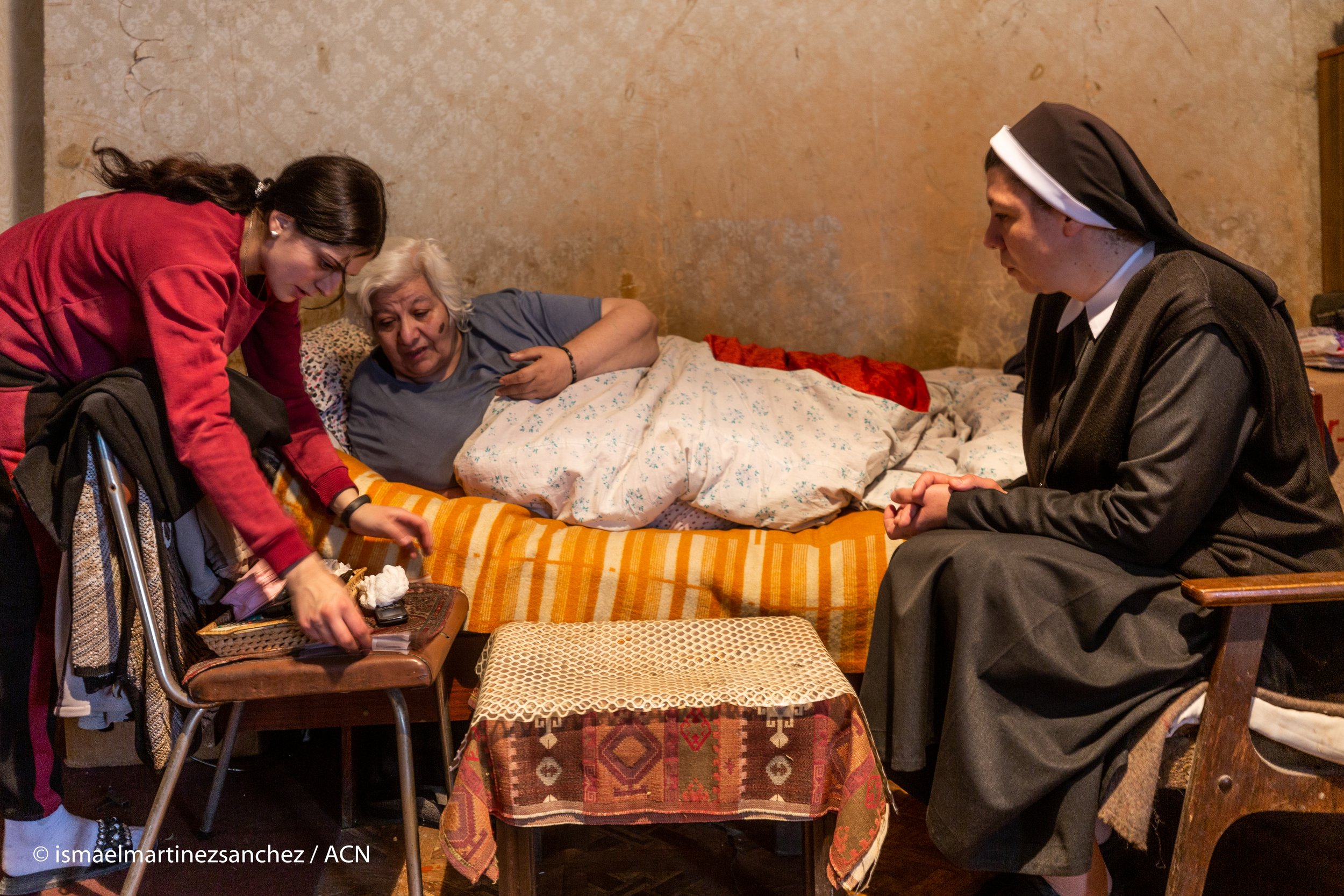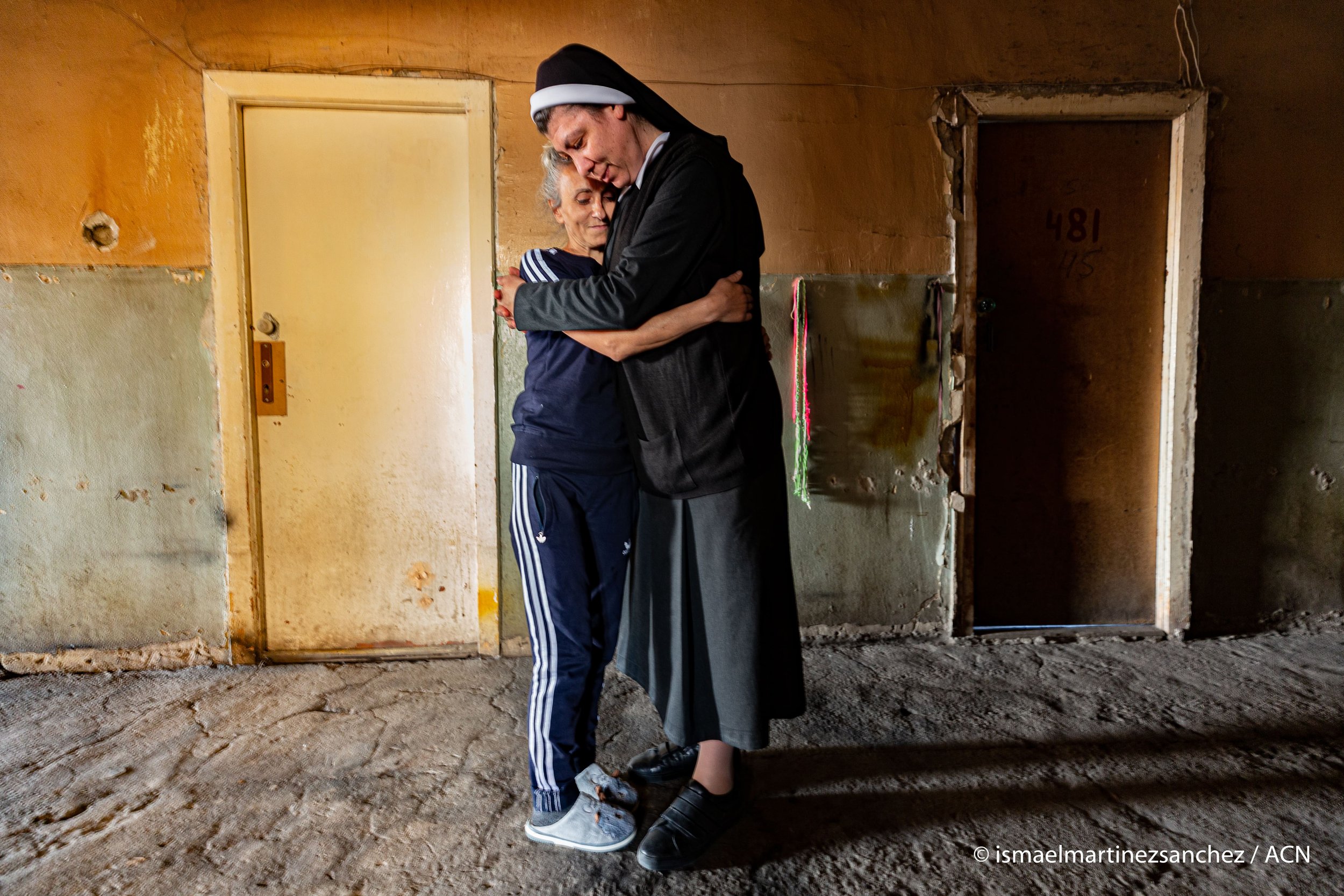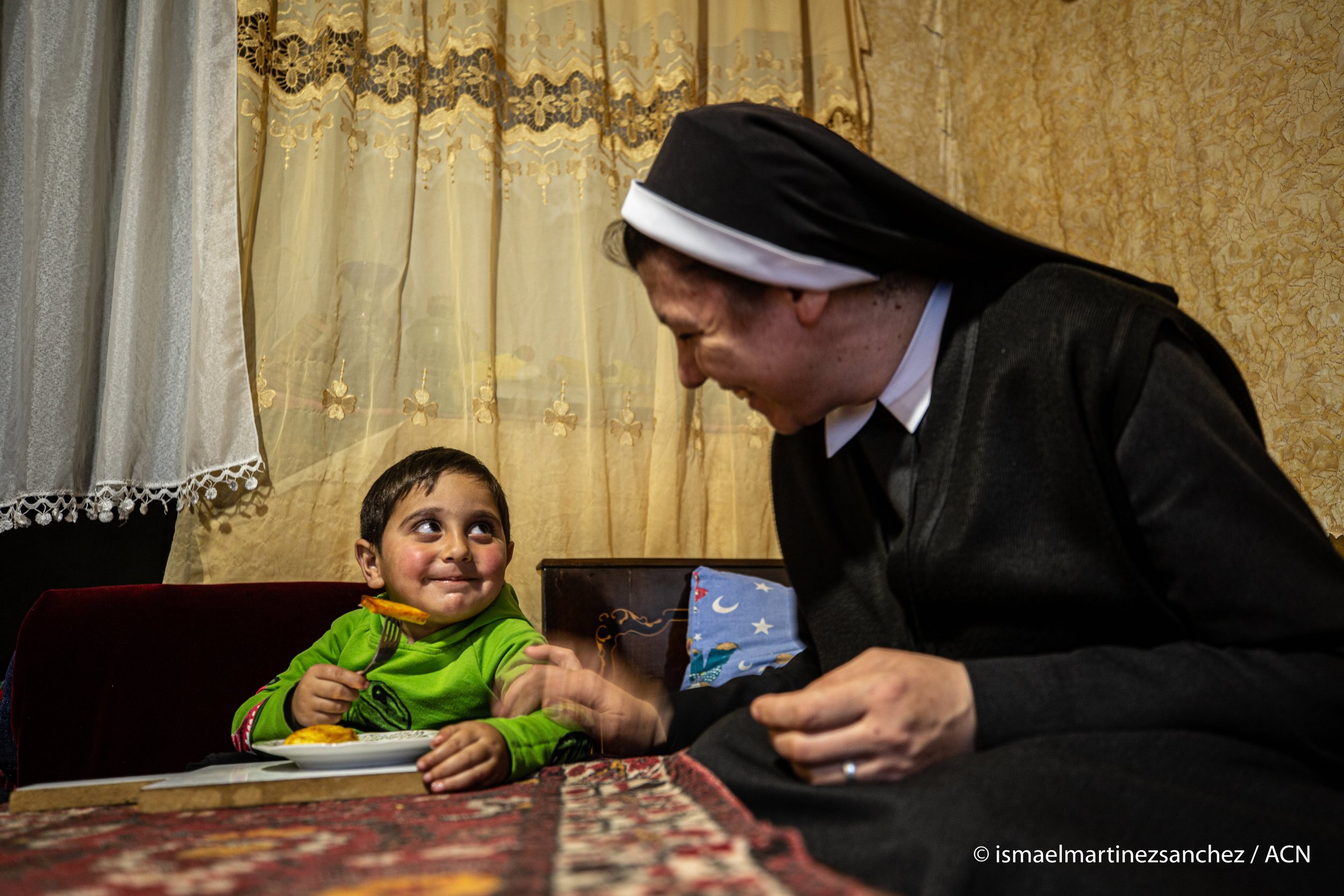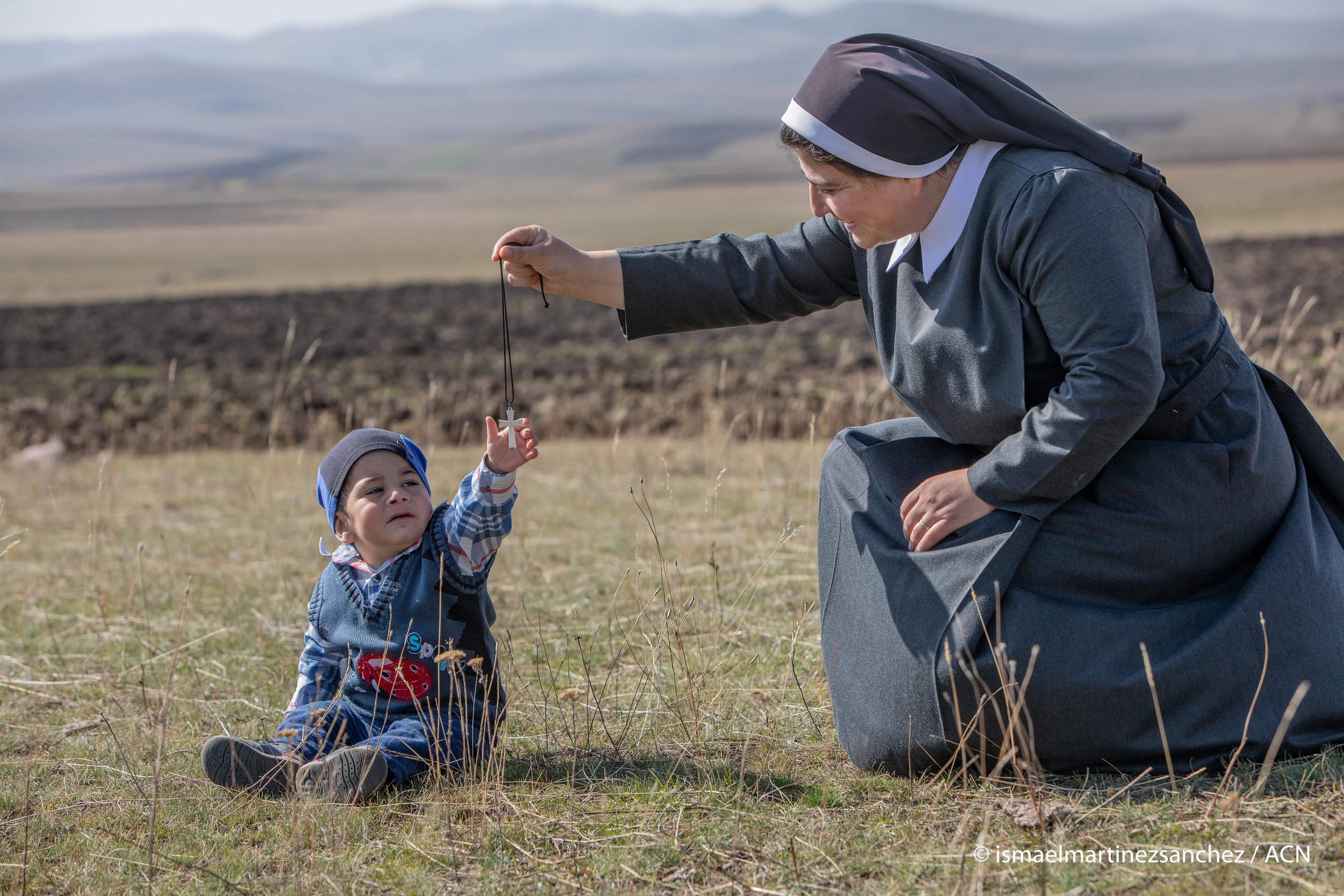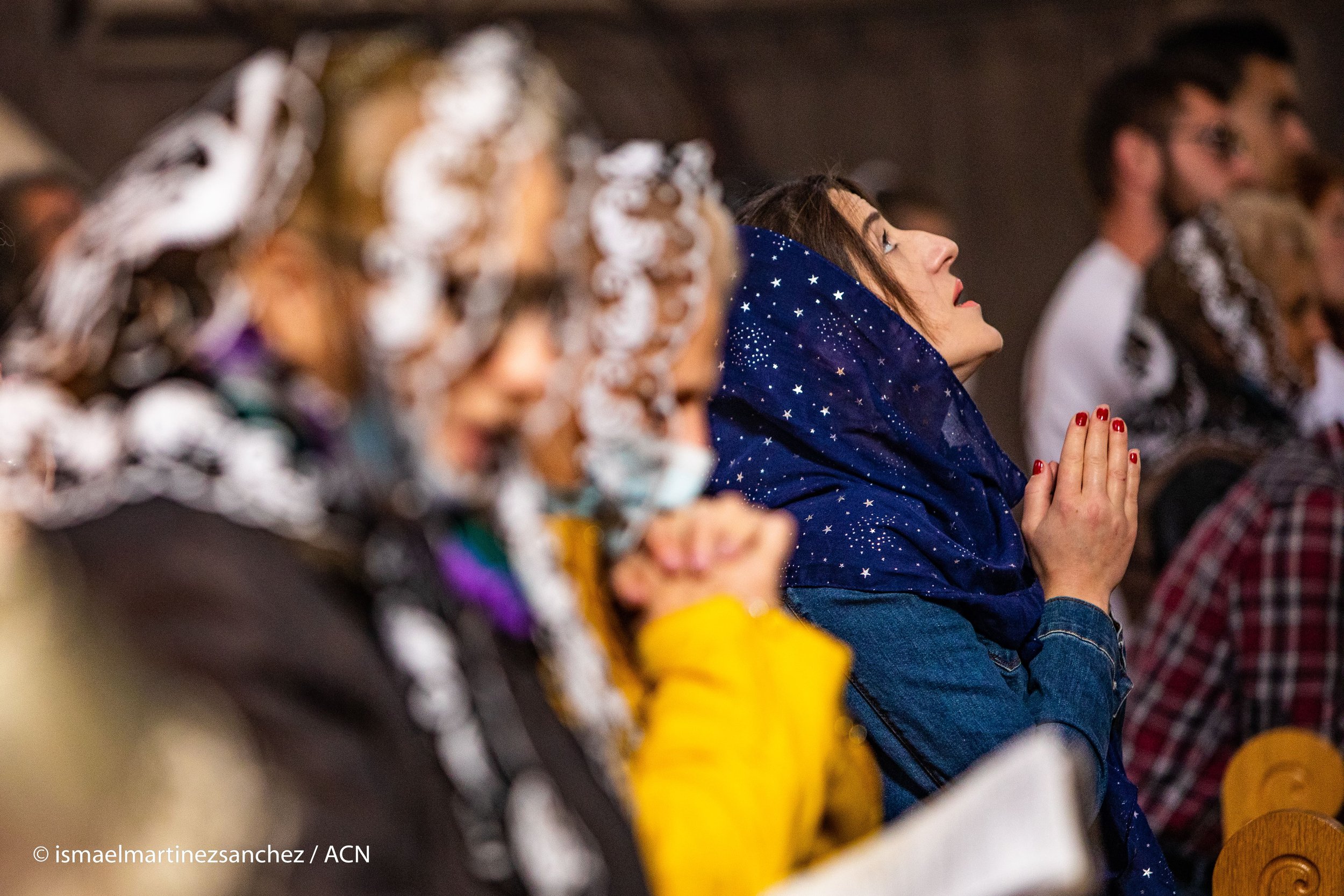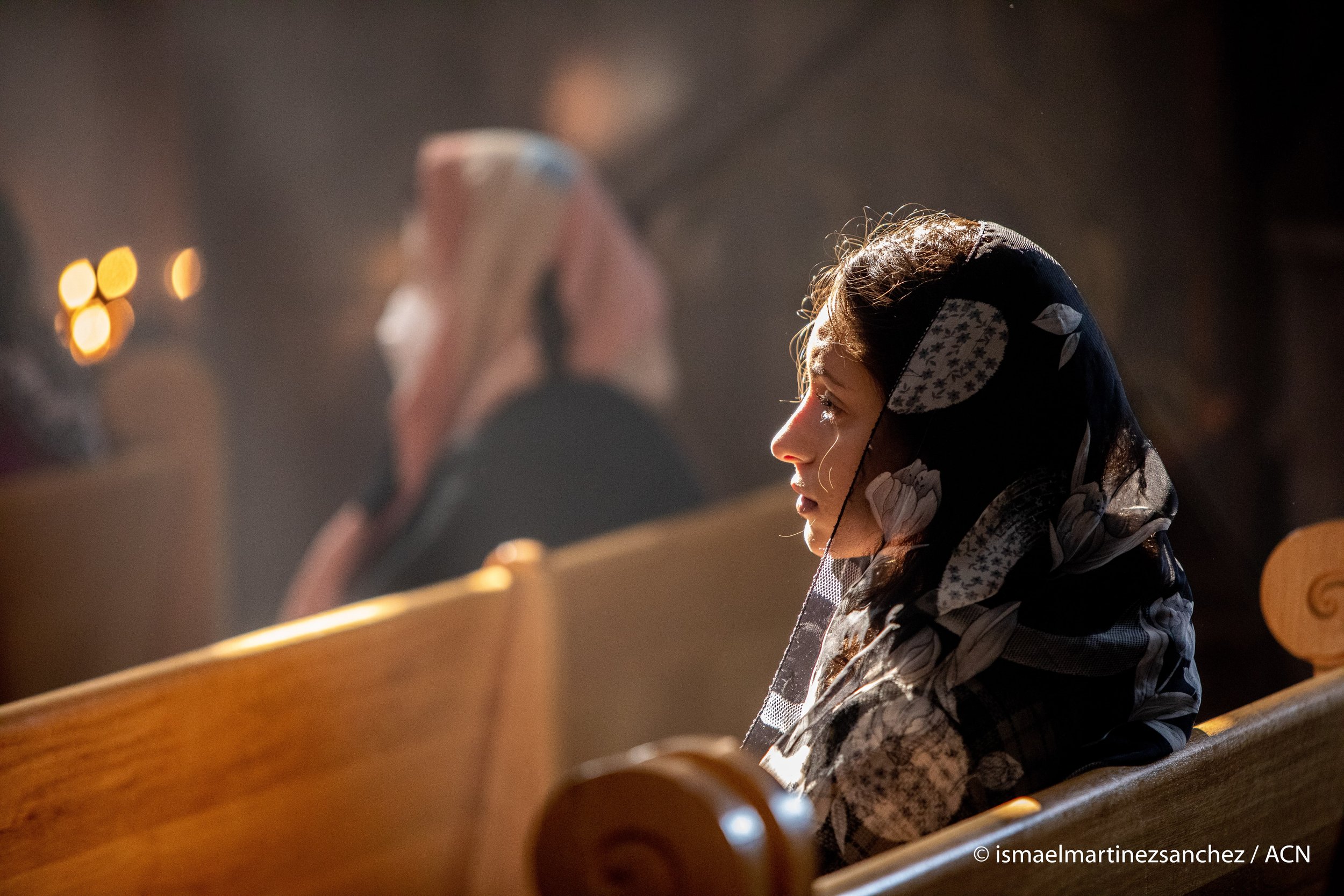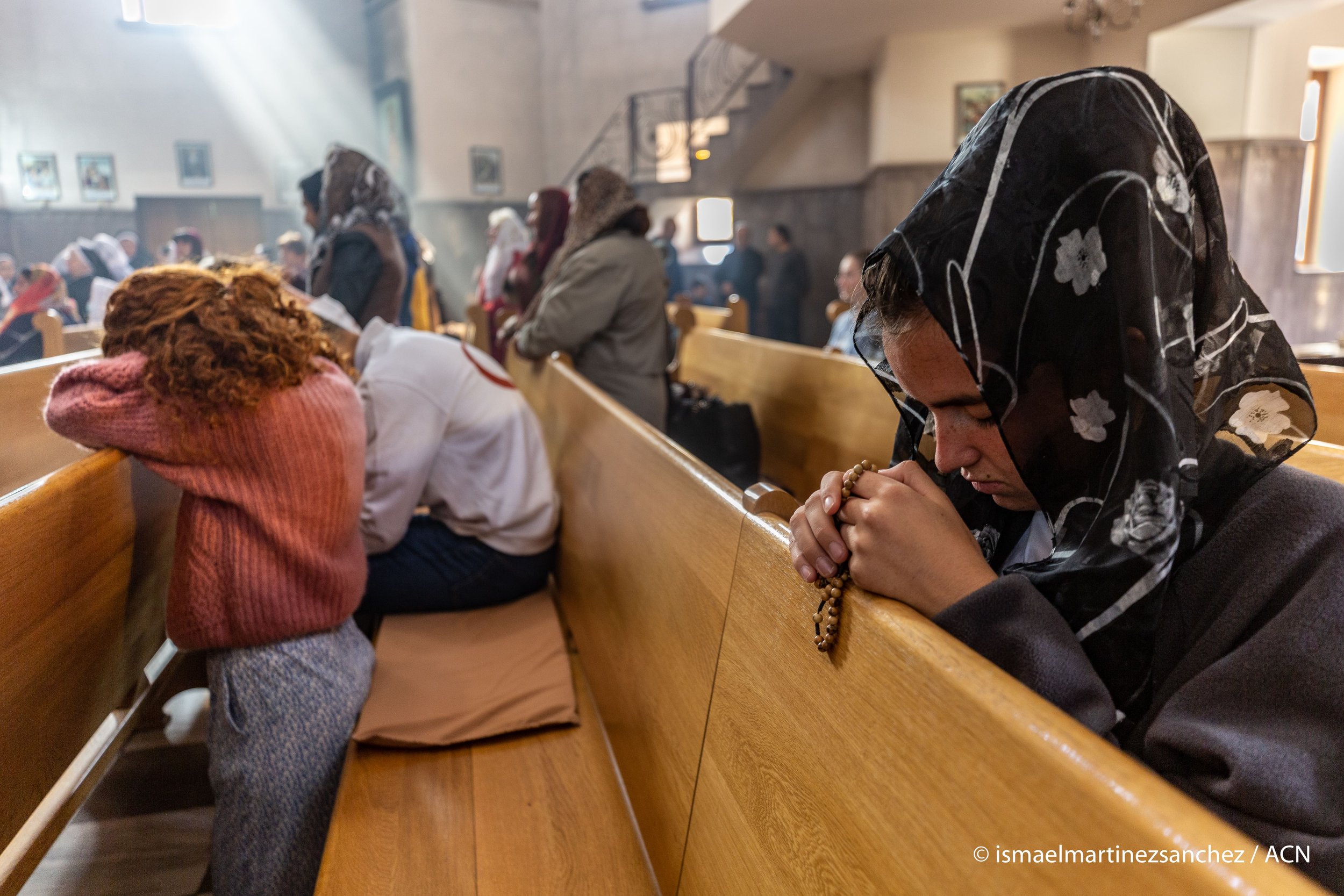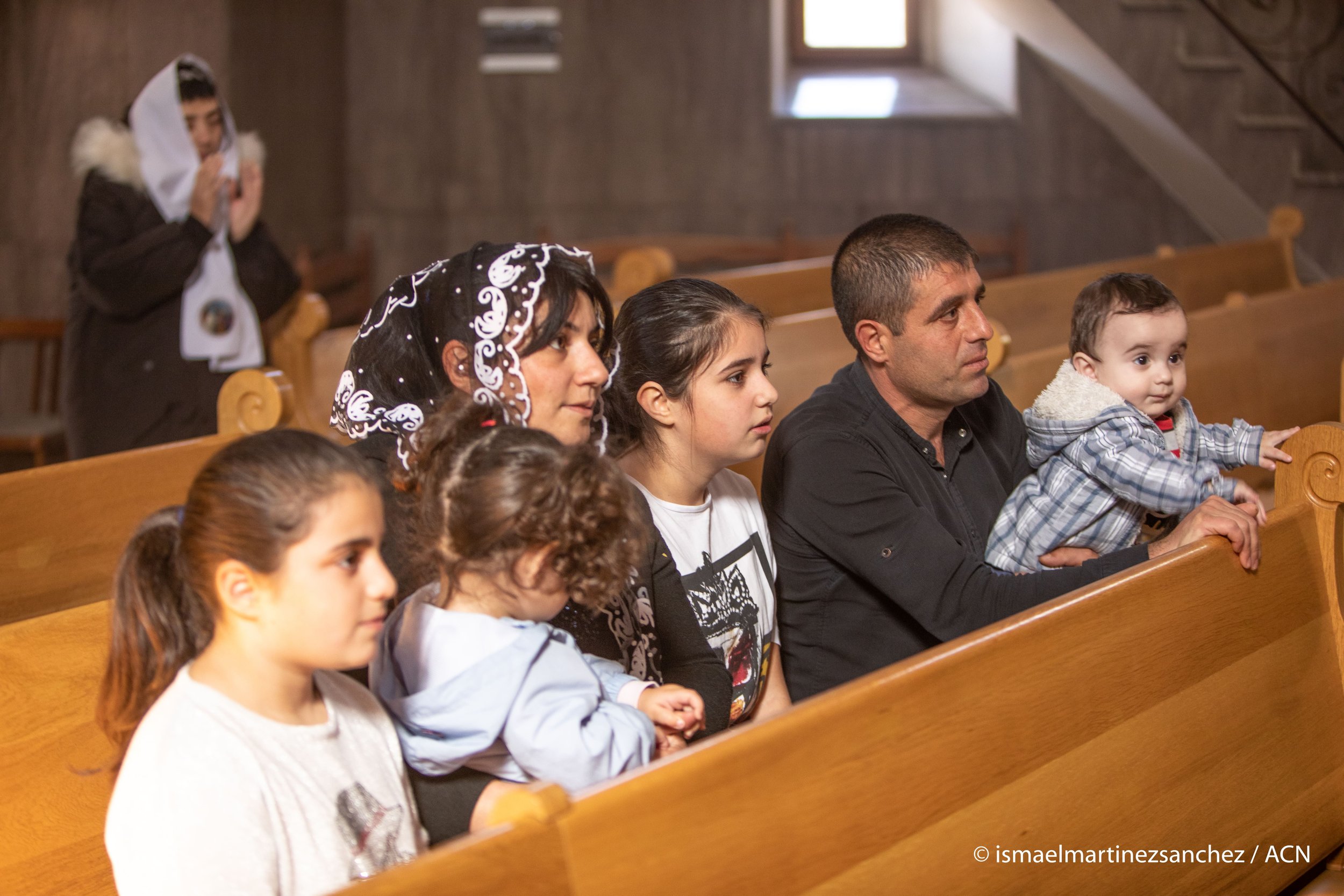The Catholic Church in Armenia
Recently a team from ACN made a trip to the South Caucasus, including Armenia. ACN’s head of section for Armenia spoke about the situation in Armenia and the challenges facing the Catholic Church there.
By ACN Staff
A priest kneeling in the oratory of the youth summer camp of the Armenian Catholic Ordinariate in Torosgyugh near Ashotsk. (Credit: Ismael Martínez Sánchez/ Aid to the Church in Need)
In October 2021, a team from ACN International made a trip to Armenia. Due to restrictions on travel caused by the Covid-19 pandemic, this was the first time that Marco Mencaglia was able to visit both Armenia and Georgia since becoming ACN’s head of section a year and a half ago.
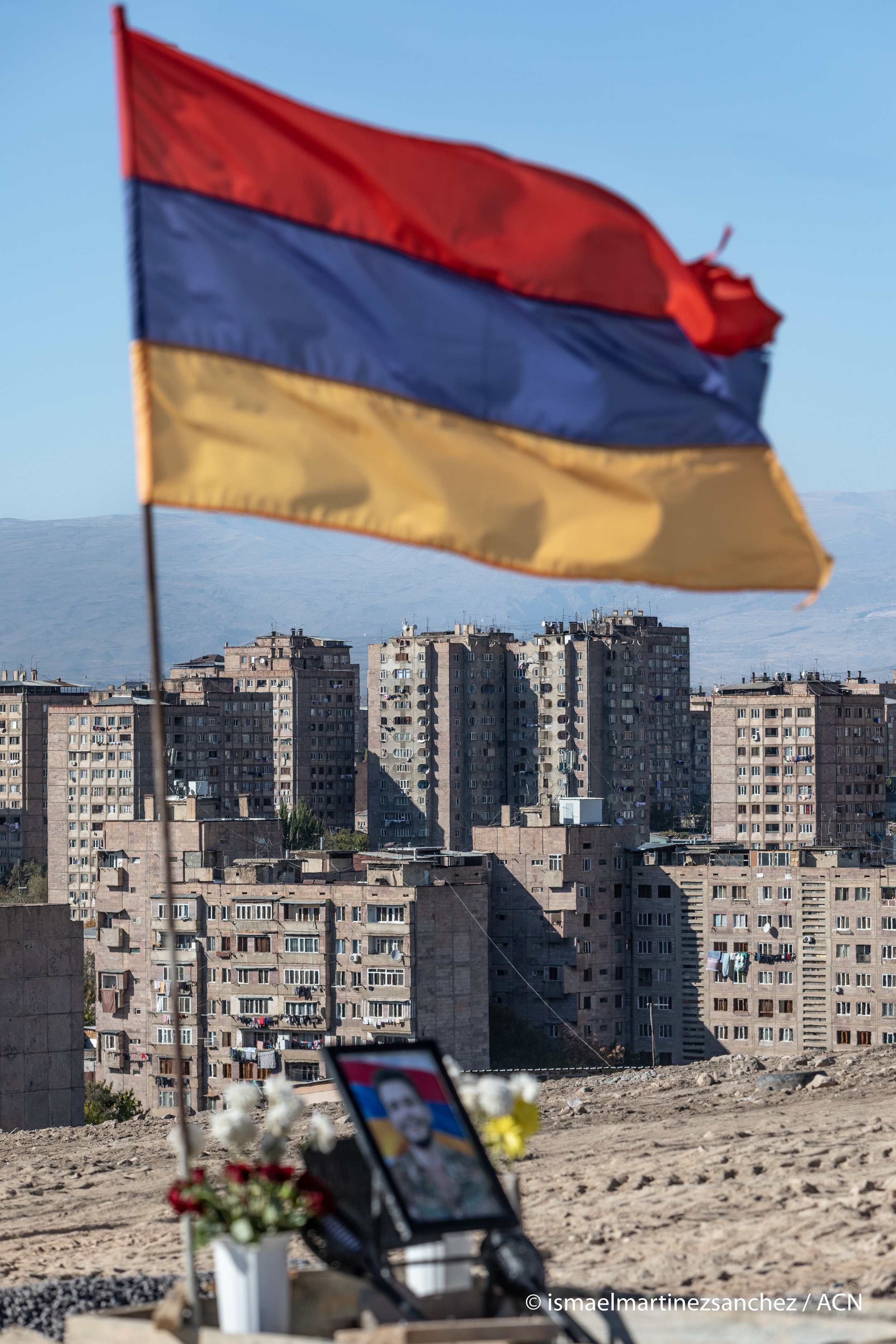
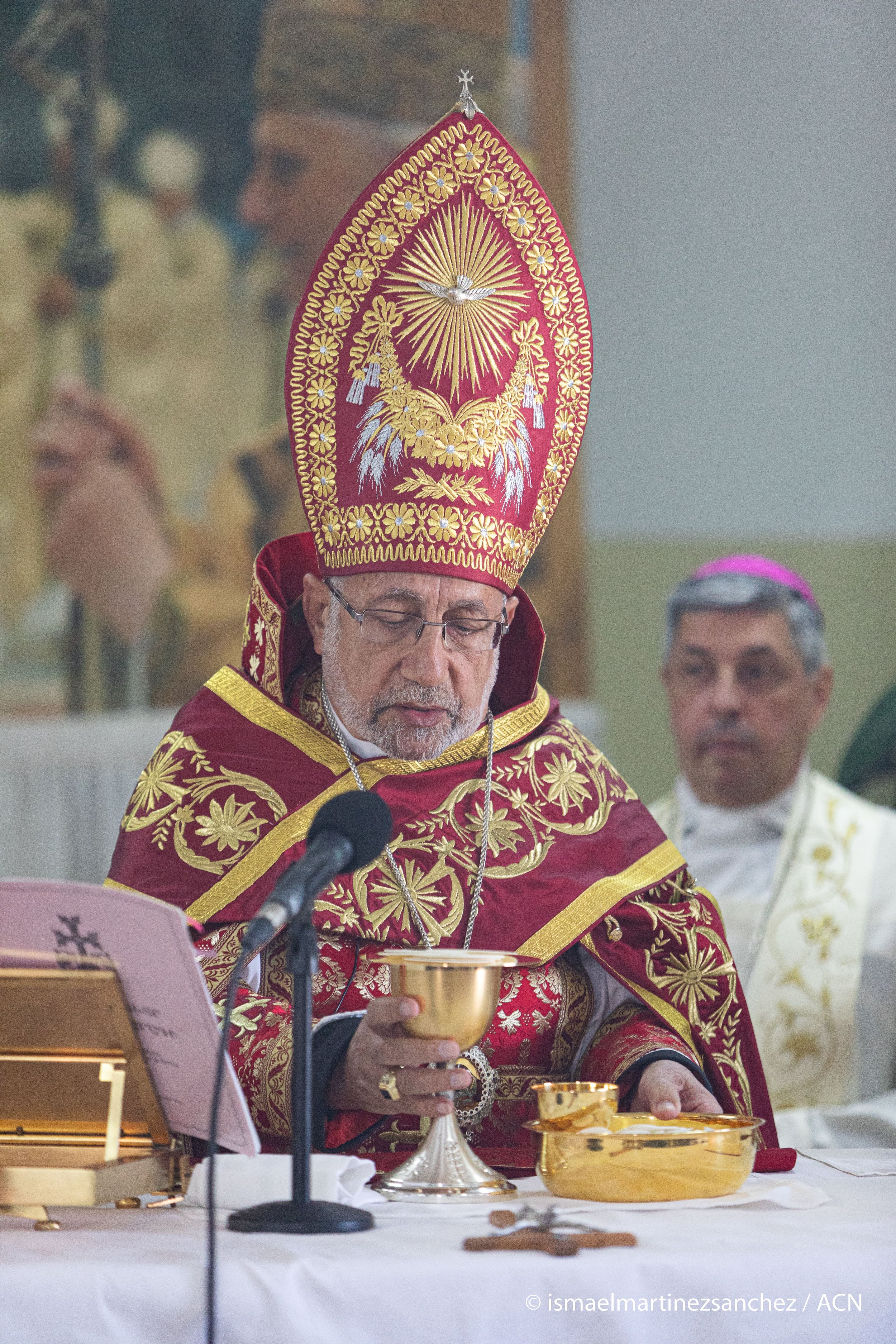
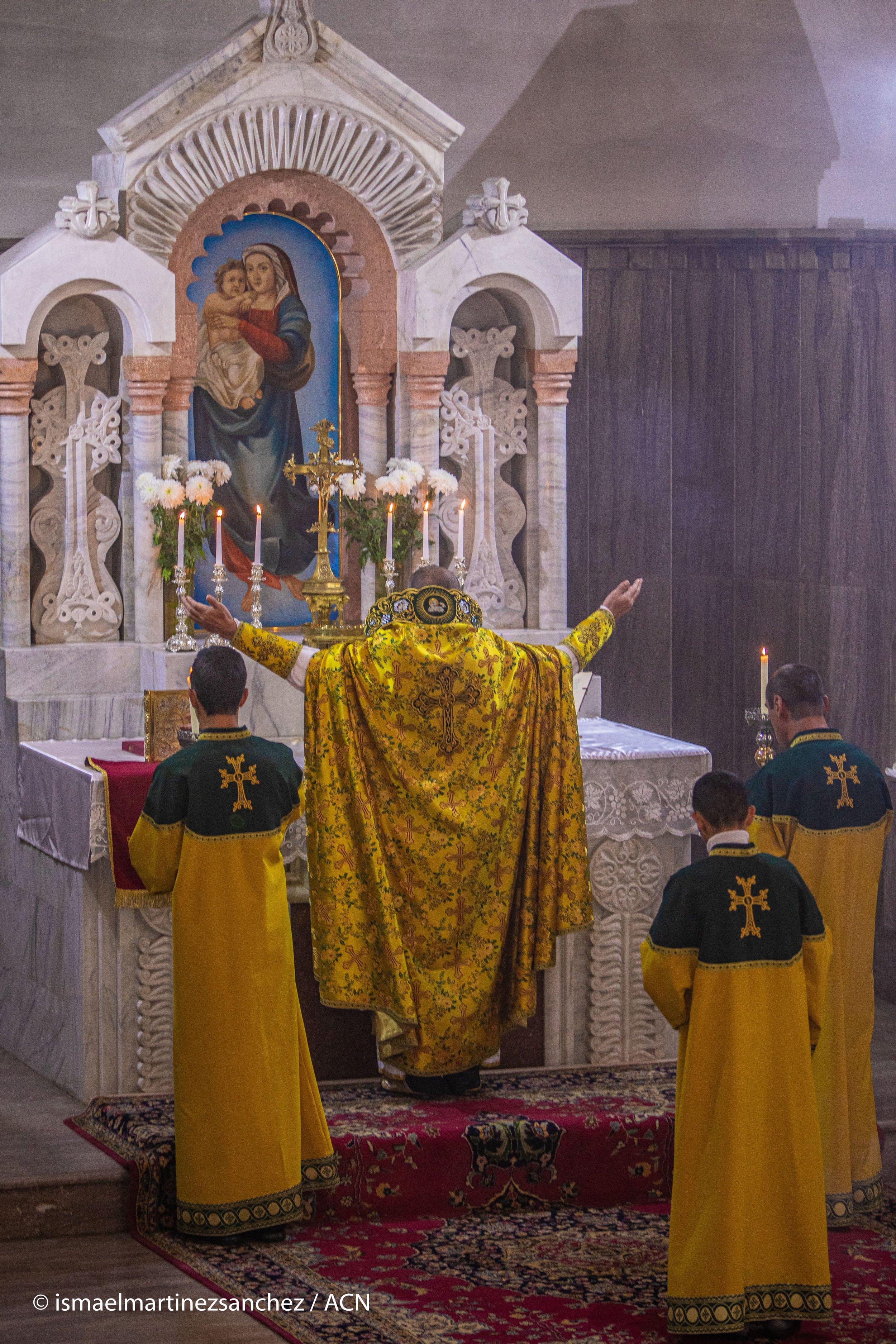
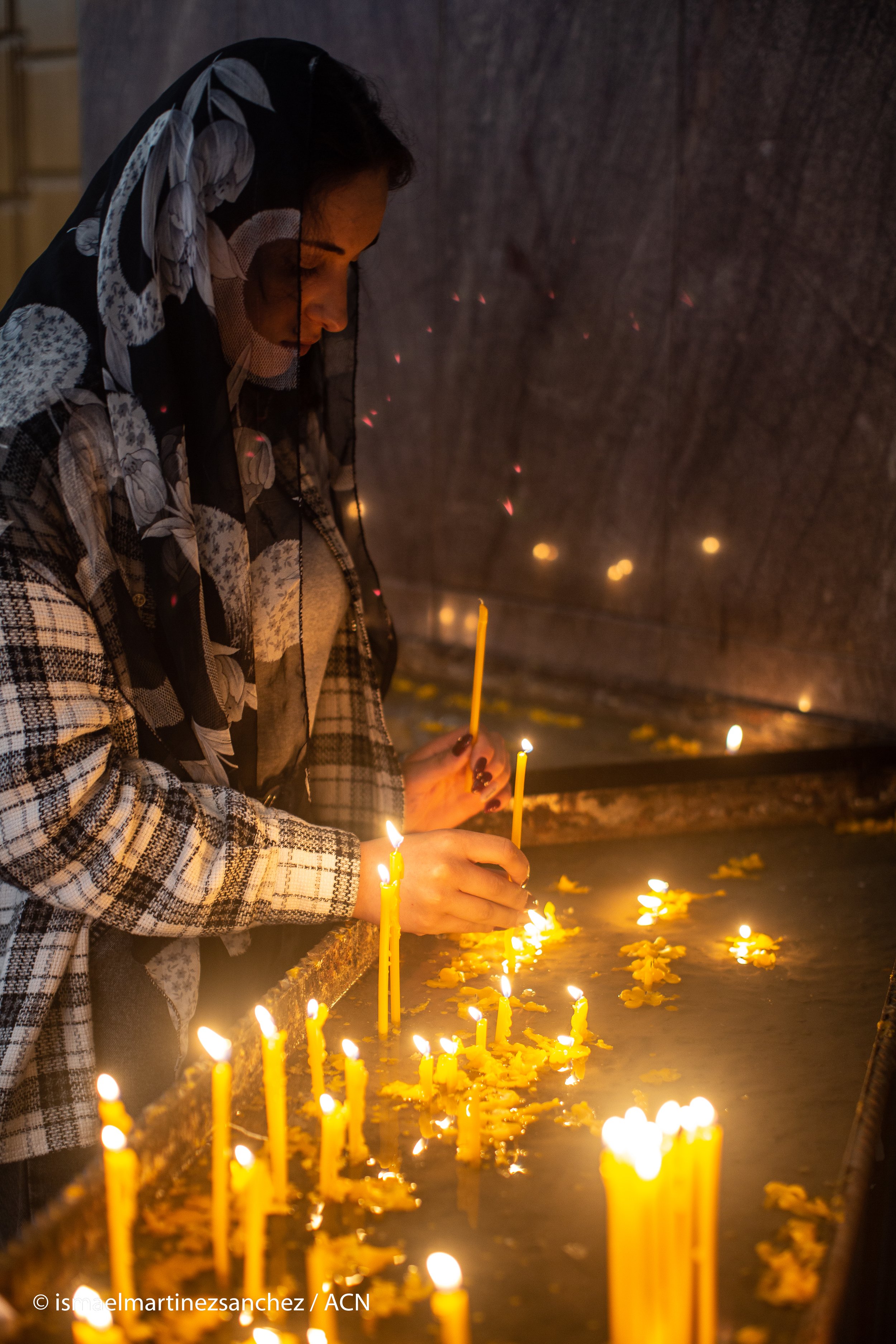
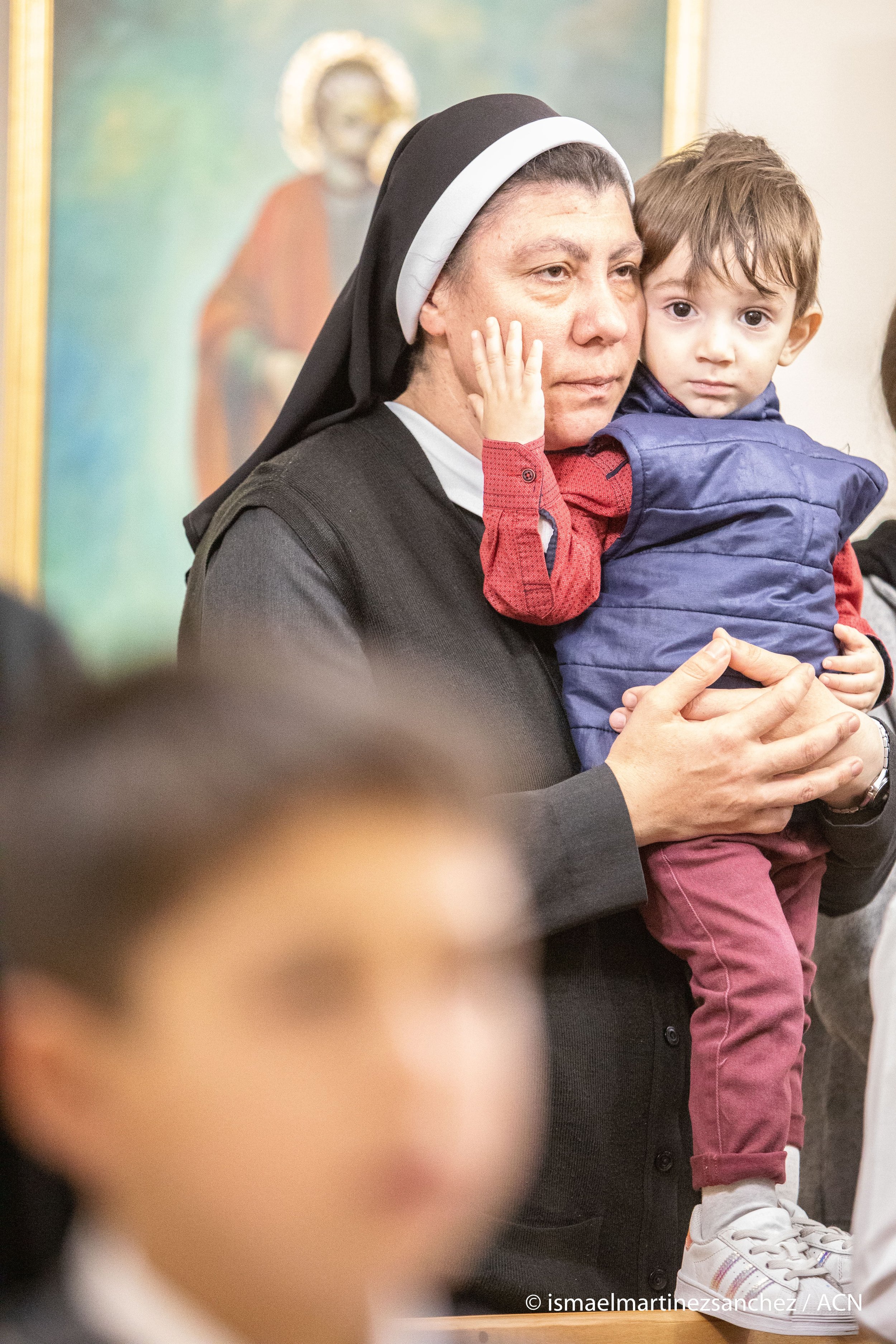
For Marco, this was an excellent opportunity to better understand the needs of the Church in Armenia and see what ACN can do to help the Church there.
Upon returning from the Caucasus, Marco was interviewed about his experience by Kira von Bock-Iwaniuk. Commenting on the similarities between Armenia and Georgia, Marco first explained that despite neighbouring each other, Georgia and Armenia are very different in terms of history, culture, language and even their respective alphabets.
Despite this, there are some similarities. Both Armenia and Georgia are amongst the oldest Christian nations in the world, with both countries converting to Christianity in the 4th century. Armenians and Georgians are devoted people who take Christianity seriously. Catholics are a small minority in both countries, and the Church’s institutional presence is relatively new. Despite this, Catholic organisations and religious orders are vital in providing social services to many vulnerable people in the region. In Armenia, most ethnic Armenian Catholics are members of the Armenian Catholic Church, while many of the non-Armenian Catholics in the country are members of the Latin Catholic Church.
Marco also commented on the fact that both countries are involved in territorial disputes and conflicts:
“Finally, both countries are under constant pressure following the major armed conflicts in Abkhazia and South Ossetia as well as the more recent conflict in Nagorno-Karabakh. The respective governments face serious difficulties brought on by the dramatic loss of human life and the need to cope with large numbers of refugees.”
Patriarch Raphaël Bedros XXI Minassian of the Armenian Catholic Church talking with Marco Mencaglia from ACN International. (Credit: Ismael Martínez Sánchez/ Aid to the Church in Need)
Marco also discussed some of the biggest challenges facing the Catholic Church in Armenia:
“In Armenia, the Catholic Church can be found almost exclusively in regions located in the north-western parts of the country, in addition to a number of parishes behind the border in southwestern Georgia. These are poor and inhospitable regions situated at an altitude of more than 2,000 metres.
The winters are harsh and can last up to six months. The unemployment rate is very high and the only option left for many of these people is seasonal or permanent migration to neighbouring countries. In this kind of situation, it is understandable that the Church has committed itself to providing extensive social services to the weakest in society in order to give them hope and an alternative to leaving their homelands.
The Church has further committed itself to fostering new vocations, as the number of priests and religious sisters falls far below the actual needs of the faithful. Similar to the Catholic Church in Georgia, the Church in Armenia does not have a seminary and the students are sent to various seminaries across western Europe. The project for the establishment of a seminary in Gyumri, the seat of the bishop, is currently at a standstill due to lack of funding.”
In 1988, the northwest of Armenia (where most Catholics live) was hit by a devastating earthquake. The Church helped to provide relief to those impacted by this disaster. Marco spoke of the current crisis impactiaffectinga:
“The most recent crisis, of course, had to do with the admission of refugee families from Nagorno-Karabakh. In autumn of 2020, when the area was in a state of emergency, the number of refugees exceeded 90,000. In the first year following the conflict, the international aid network was able to meet their most urgent needs. However, the problem now is that the eyes of the world are no longer directed toward Armenia and the flow of aid has been reduced drastically. Many of the Christian families have lost everything. The vast majority of them are single mothers with children, who are still living in precarious circumstances. After returning from the trip, ACN approved emergency relief for these families.”
As Marco explains, ACN has a history of supporting the Armenian Catholic Church:
“For years, ACN has been supporting pastoral initiatives of the Armenian Catholic Ordinariate of Eastern Europe, particularly summer youth camps. As the Ordinariate, which maintains its headquarters in Armenia, is also responsible for members of the Armenian Catholic Church in Georgia, Russia, Ukraine and other countries in the region, these activities have an international dimension. With more than 200,000 members, this is the jurisdiction with the largest number of faithful of the entire Armenian Catholic Church.”
If you would like to help ACN support the Catholic Church’s mission in countries like Armenia and Georgia, please consider donating.
